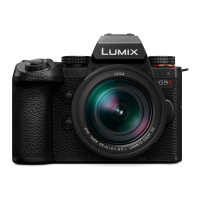
Do you have a question about the Panasonic LUMIX DC-G9M2 and is the answer not in the manual?
| Sensor Resolution | 25.2 MP |
|---|---|
| Effective Pixels | 25.2 MP |
| Image Processor | Venus Engine |
| ISO Sensitivity | 100-25600 (expandable to 50-25600) |
| Viewfinder | 3.68 million dots |
| Mount | Micro Four Thirds |
| Sensor Type | MOS |
| Sensor Size | 17.3 x 13.0 mm |
| Shutter Speed | 1/8000 sec - 60 sec |
| Autofocus Points | 779 |
| Viewfinder Type | Electronic |
| Screen Size | 3.0" |
| Video Resolution | 4K (3840 x 2160) at 60p |
| Image Stabilization | 5-axis in-body image stabilization (IBIS) |
| Memory Card Slot | Dual SD card slots (UHS-II) |
| Connectivity | Wi-Fi, Bluetooth |
| Battery Life | Approx. 400 shots |
| Weight | 658 g (body only) |
| Autofocus System | Contrast Detection with DFD Technology |
| Screen | Free-angle Touch LCD (1.84 million dots) |
| Battery | DMW-BLK22 Lithium-ion |
Important information and precautions to know before operating the camera for the first time.
Lists all accessories supplied with the camera package for setup and initial use.
Information on compatible lenses for the Micro Four Thirds system mount, including function variations.
Details on supported SD, SDHC, and SDXC memory cards, including speed class requirements.
Identifies and labels the various physical parts of the camera and interchangeable lenses.
Instructions on how to charge the camera battery before first use, including charging methods.
Step-by-step guide for inserting memory cards into the camera's dual card slots.
Guide on how to correctly attach interchangeable lenses to the camera mount to ensure proper function.
Guide to setting the camera's internal clock, date, and time zone upon initial power-on.
How to rotate the mode dial to select various recording modes like iA, P, A, S, M, Creative Video, and S&Q.
Explanation of how to use the camera's control parts (dials, buttons, joystick, touchscreen) for settings.
Accessing and using the Quick Menu for rapid access to frequently used functions without opening the main menu.
How to navigate and operate the camera's menu system using various controls.
Using the iA mode for automatic scene detection, optimal settings, and easy shooting.
Fundamental operations and settings for capturing still images, including selecting recording modes and adjusting focus.
Adjusting the compression rate for storing pictures, balancing image quality and file size.
Fundamental operations for recording video, including starting, stopping, and exposure control.
Selecting the recording file format for videos, impacting compatibility and editing options.
Setting the image quality for videos, affecting resolution, frame rate, and bit rate.
Configuring audio recording parameters like input levels, gain, quality, noise reduction, and monitoring channels.
Creating slow motion and quick motion videos by adjusting frame rates relative to recording frame rate.
Enabling Log recording via Photo Style for maximum flexibility in post-production color grading.
Fine-tuning shutter speed to reduce flickering and horizontal stripes under artificial lighting.
Instructions on connecting the camera to external monitors or recorders using an HDMI cable.
Understanding how image quality parameters are affected by recording mode and HDMI output settings.
Information on external SSDs compatible with the camera, including USB Type-C requirements.
Step-by-step guide on how to connect the external SSD to the camera using a USB connection cable.
Procedure for formatting the external SSD with the camera to ensure proper operation.
How to display and navigate through still images in playback mode, including single and multi-image views.
How to play, pause, and control video playback using camera controls.
Methods for deleting selected images, multiple images, or entire groups, with confirmation prompts.
Processing RAW images in-camera to save them as JPEGs with adjustable settings.
Repairing video files that could not be completed normally and may be unplayable.
Registering functions to the Fn buttons for quick access during recording and playback, with default settings.
Changing the items displayed and their order in the Quick Menu to suit user preferences.
Registering and using custom recording modes (C1, C2, C3) for personalized settings.
Accessing advanced settings categorized into Image Quality, Focus/Shutter, Operation, Monitor/Display, IN/OUT, and Lens/Others.
Making basic camera settings related to card management, monitor/viewfinder display, input/output, and system preferences.
Registering frequently used menus for quick access and organizing them.
Connecting the camera to a smartphone using the LUMIX Sync app via Wi-Fi or Bluetooth.
Using a smartphone to remotely control camera functions like shooting, importing, and settings.
Transferring recorded images from the camera to a PC wirelessly via Wi-Fi.
Managing Wi-Fi connections, including new connections, saved settings, and direct connections.
Configuring Wi-Fi settings like remote device priority, password protection, and PC connection.
Instructions on connecting the camera to external devices like TVs and PCs using HDMI or USB cables.
Copying recorded images from the camera to a PC using USB connection and compatible software.
Controlling the camera from a PC via USB using LUMIX Tether software for remote shooting.
Information on using optional accessories like battery grips, remote controls, tripod grips, and AC adapters.
Explains the various icons and information displayed on the camera's monitor and viewfinder.
Meanings of common error and information messages and their corresponding solutions.
Common issues encountered during camera operation and troubleshooting steps.
Important safety precautions and handling instructions for the camera, battery, and accessories.
Charts detailing picture counts and video recording times based on media capacity and video settings.
A reference list of default settings and the availability of custom saving and copying functions.
Tables indicating which functions are available across different recording modes (iA, P, A, S, M, etc.).
Technical specifications for the camera body, lens, image sensor, and interfaces.
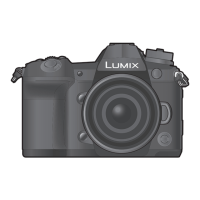
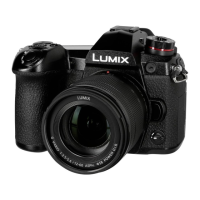
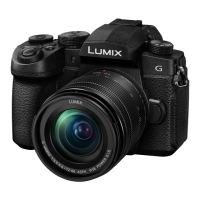
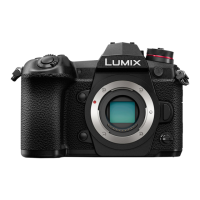
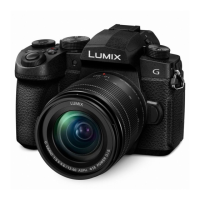
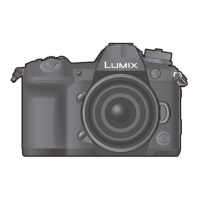


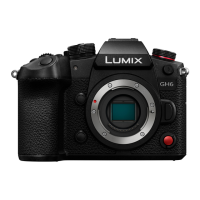
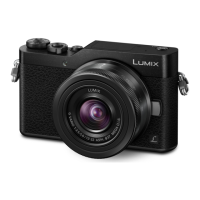
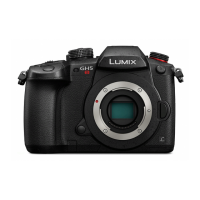
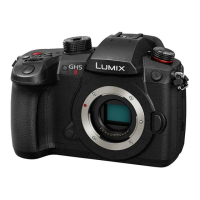
